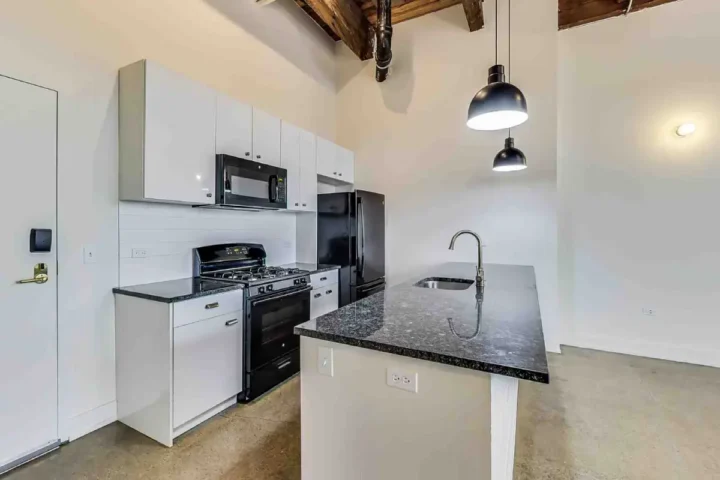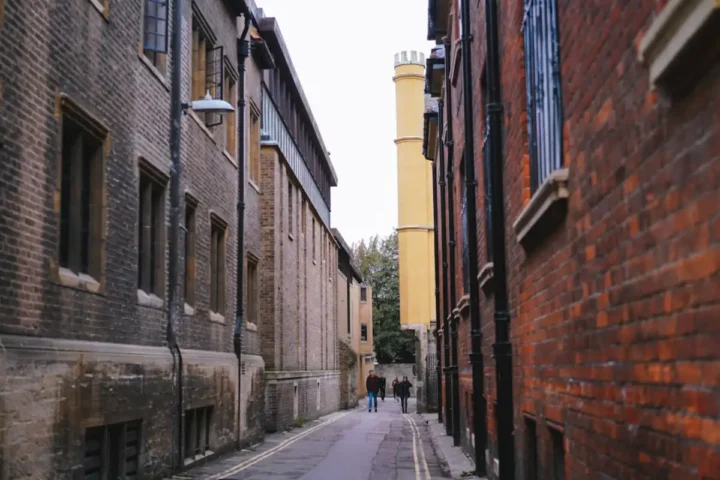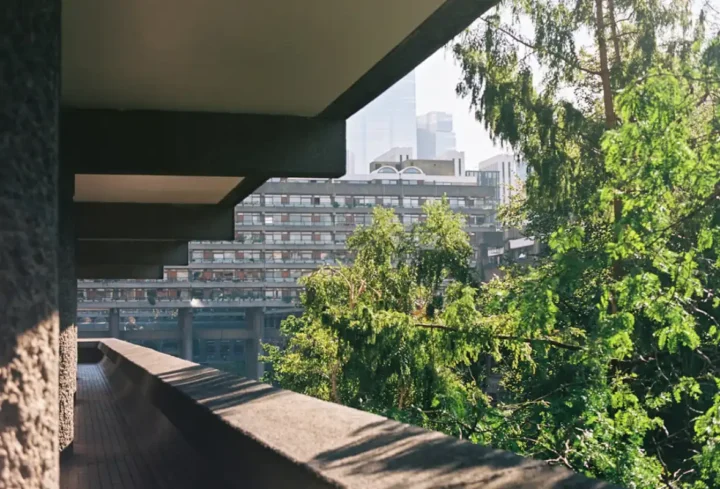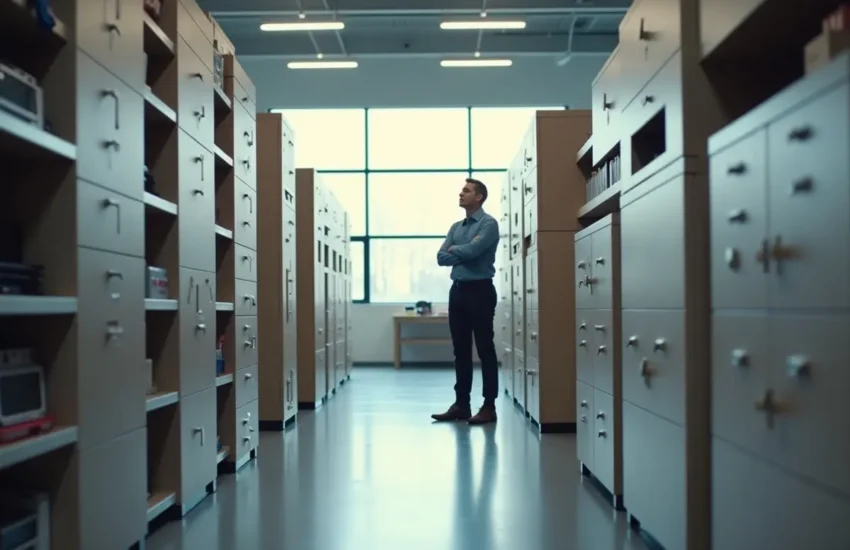Loft Living: Explore Chicago’s Top Loft Rentals
Imagine entering a home where history whispers from exposed brick walls and sunlight streams through oversized windows. This is the unique charm of a Chicago loft-style apartment. Born from the city’s rich industrial past, these distinctive living spaces blend raw architectural beauty and modern comfort.
We understand the allure of open-concept living and the desire for a home with character, which is why we have created this comprehensive guide. We will explore what defines a loft apartment in Chicago and its fascinating origins.
Join us as we uncover the different types of lofts available, from classic warehouse conversions to modern soft lofts. We will highlight the Chicago neighborhoods famous for these architectural gems and discuss the typical features you can expect. Finally, we will provide practical insights into pricing, amenities, and the pros and cons of embracing this unique urban lifestyle.
Chicago’s architectural landscape is a testament to its industrious history, and nowhere is this more evident than in its loft apartments. These unique residences are not just spaces; they are narratives woven into the very fabric of the city.

What Defines a Loft Apartment in Chicago?
At its core, a loft apartment in Chicago is characterized by its open floor plan, typically featuring minimal interior walls, allowing for expansive, free-flowing living areas. This openness is often complemented by soaring ceilings, which can range from 10 to 20 feet or more, creating an incredible sense of volume and airiness.
Another hallmark is the presence of oversized windows, often stretching from floor to ceiling, designed to flood the deep floor plates of former industrial buildings with natural light. These windows frequently offer stunning city views, connecting the interior to the vibrant urban environment outside.
Beyond these structural elements, the aesthetic of a Chicago loft accepts its industrial heritage. You’ll commonly find exposed brick walls, revealing the building’s original construction materials. Visible ductwork, pipes, and structural beams (often timber or steel) are celebrated design elements, not hidden, contributing to the authentic industrial aesthetic.
This approach, known as adaptive reuse, transforms historical commercial or industrial spaces into residential units, preserving their unique character while updating them for modern living.
The Different Types of Chicago Loft Style Apartments
While the term “loft” conjures a specific image, Chicago’s diverse architectural history has given rise to several distinct types of loft apartments, each with its own charm and characteristics. Understanding these distinctions can help you pinpoint the ideal loft for your lifestyle.
Type of Loft Origin Key Materials Common Features Warehouse/Industrial Lofts Converted factories, warehouses, or commercial buildings from the late 19th and early 20th centuries. Exposed brick, concrete floors, steel beams, large factory windows. Raw, edgy feel; often have freight elevators, loading docks repurposed as common areas; high ceilings; large, open spaces.
Timber Lofts Converted industrial buildings that used heavy timber construction. Exposed wooden beams, timber columns, wood plank ceilings, often hardwood floors. Warm, rustic aesthetic; excellent sound absorption; historic charm; often found in older manufacturing districts. Soft Lofts Newer constructions or renovations designed to mimic the loft aesthetic, without being true industrial conversions.
High ceilings, large windows, open layouts, but may feature drywall instead of exposed brick, or newer materials. Modern amenities; often more polished finish; blend of industrial style with contemporary comforts; can be found in purpose-built buildings or recent conversions. Historical Origins and Architectural Features
The story of Chicago’s loft apartments is deeply intertwined with the city’s rapid growth as a manufacturing and commercial powerhouse in the late 19th and early 20th centuries. Chicago’s manufacturing boom led to the construction of vast factories, warehouses, and commercial buildings designed for functionality and durability.
As industries shifted and urban landscapes evolved, many of these robust structures, particularly in areas like Printers Row, became obsolete for their original purposes. However, their sturdy construction, high ceilings, and large footprints made them ideal candidates for residential warehouse conversions. For instance, some of these buildings were once home to piano companies or printing presses, and their change into living spaces marked a pivotal moment in urban renewal.
This movement began in earnest in the 1970s and 80s, as artists and urban pioneers sought affordable, expansive spaces. Developers soon recognized the appeal, leading to widespread architectural preservation efforts that transformed these industrial giants into desirable residential units.
The result is the distinctive industrial-chic design that defines Chicago’s loft apartments today, a harmonious blend of the past and the present. For example, the building now known as Cobbler Square Lofts, originally built in 1880 as the headquarters for Dr. Scholl’s Manufacturing Company, was transformed in 1985 into one of the first major examples of classic Chicago loft living, blending historic character with modern design.
Where to Find Chicago Loft Style Apartments
Chicago’s industrial past means that loft apartments are not confined to a single area but are scattered across various neighborhoods, each offering a distinct flavor of urban living.
If you’re looking to explore the options, you’ll find a significant concentration in areas that were once busy industrial or commercial centers. Currently, there are 945 loft apartments available to rent across Chicago, IL, offering a wide range of choices for prospective residents.
The West Loop & Fulton Market: The Epicenter of Loft Living
Once a gritty former industrial hub characterized by meatpacking plants and warehouses, the West Loop and Fulton Market districts have dramatically changed. Today, they are widely considered the epicenter of loft living in Chicago. This area boasts a high concentration of stunning loft conversions, reflecting its past while embracing a vibrant present.
Residents here enjoy unparalleled access to “Restaurant Row,” a world-class culinary destination. The neighborhood also has numerous art galleries and boutique shops, creating a dynamic and culturally rich environment. Its proximity to downtown Chicago and excellent transit access make it a highly sought-after location for those seeking an authentic urban loft experience.
For instance, you can find impressive West Loop loft options like the penthouse loft at 1000 W Washington, showcasing panoramic skyline views. Additionally, exploring lofts for rent in West Loop Chicago offers a closer look at available properties in this dynamic area.
River North & South Loop: Lofts with a Downtown Vibe
River North and the South Loop offer compelling options for those who prefer a loft with a strong connection to the city’s core. River North, known for its art galleries and design studios, features a mix of converted warehouses and commercial buildings that provide a sophisticated loft experience.
The South Loop, particularly the historic Printers Row, is famous for its grand, turn-of-the-century buildings that once housed publishing companies. These have been carefully converted into residential lofts, retaining their architectural grandeur. Many buildings in these areas are high-rise lofts or converted office buildings, offering stunning views and direct access to downtown amenities.
Living in the South Loop also means having Museum Campus as your extended backyard, home to cultural institutions like the Field Museum, Shedd Aquarium, and Adler Planetarium. Proximity to Grant Park further improves the appeal, providing vast green spaces in the city’s heart. These neighborhoods offer dense urban living combined with historical charm.
The Lofts at River East, transformed from a 1900s warehouse, now offers 285 units with diverse floor plans, providing a unique downtown living experience in Streeterville. AMLI Lofts in Printers Row also exemplifies this blend, offering 226 units that combine industrial-style elements with modern amenities.

North and West Side Gems: Lincoln Park, River West & Pilsen
Beyond the immediate downtown area, Chicago’s North and West Sides also harbor hidden gems of loft living, each with distinct character.
Lincoln Park, known for its beautiful parks and tree-lined streets, also features loft conversions, particularly in the Clybourn Corridor. These lofts often combine a residential feel with the industrial aesthetic, providing a unique blend of urban and neighborhood living. An example is the Clybourn Lofts, a building with a rich history as a former piano company, transformed into a residential loft building. For more options, you can explore Lincoln Park loft apartments for rent.
River West is another excellent choice, offering a slightly grittier, more artistic vibe. Its proximity to downtown and unique converted spaces make it a popular spot for those seeking authentic loft living. You can find various River West Lofts that showcase the area’s industrial charm.
Finally, Pilsen stands out as a vibrant neighborhood with a rich cultural heritage and a growing number of impressive loft conversions. Its roots as a working-class immigrant neighborhood with strong industrial ties have left a legacy of robust buildings ripe for adaptive reuse. Pilsen’s modern apartments, such as those offered by The Otis Apartments by Flats®, perfectly blend industrial heritage and contemporary luxury.
These Pilsen Chicago loft-style apartments often feature exposed brick, high ceilings, and open layouts, reflecting the neighborhood’s unique blend of tradition and innovation. The community’s artistic flair means you’ll often find gallery-like common spaces and commissioned murals, adding to the unique character of living here. You can find more information about Pilsen loft apartments for rent.
The Practicalities of Loft Living in the Windy City
Embracing the loft lifestyle in Chicago means more than just appreciating its unique aesthetics; it also involves understanding the practical aspects of living in these distinctive spaces.
Common Amenities in Chicago Loft Buildings
Whether hard or soft, modern loft buildings in Chicago often come equipped with an array of amenities designed to improve the urban living experience. These can vary widely depending on the building and its location, but some common features include:
- Rooftop Decks: With breathtaking city skyline views, rooftop decks are perfect for entertaining, grilling, or simply relaxing outdoors.
- Fitness Centers: Many buildings provide state-of-the-art gyms, sometimes including specialized equipment like Peloton bikes, making it convenient to maintain a healthy lifestyle.
- Resident Lounges: These communal areas offer comfortable spaces for socializing, working, or hosting events.
- Co-working Spaces: Catering to the growing number of remote workers, dedicated co-working areas with high-speed internet are becoming increasingly common.
- Pet-Friendly Policies: Recognizing Chicagoans’ love for their furry companions, many loft buildings welcome pets, often with dedicated pet amenities like dog runs or washing stations.
- Bike Storage: Given Chicago’s bike-friendly initiatives, secure bike storage is a valued amenity for residents.
- Secure Entry: For peace of mind, most buildings feature controlled access and sometimes 24/7 concierge services.

Beyond these, some luxury buildings might offer unique services like the Bilt Rewards program, allowing residents to earn points on rent, or incorporate green features, contributing to healthier living spaces, as supported by research from the Harvard T.H. Chan School of Public Health.
The Field Museum of Chicago has also conducted scientific research on urban green spaces, demonstrating their positive impact, influencing developers to include extensive plantings. Living near cultural institutions, as highlighted by the Museum Campus Working Group, also significantly improves quality of life. For a comprehensive look at what to expect, exploring apartment amenities can provide further insight.
Understanding the Pros and Cons
Choosing a loft apartment means embracing a distinct way of life. Like any living situation, it comes with its own set of advantages and disadvantages.
Pros of Living in a Chicago Loft Apartment:
- Expansive Space: The open floor plans and high ceilings create immense space, often making smaller square footage feel much larger and more luxurious than traditional apartments.
- Abundant Natural Light: Oversized windows are a signature feature, flooding the interiors with natural light, positively impacting mood and energy levels.
- Unique Character: Lofts offer unparalleled architectural character, with exposed brick, timber beams, and visible ductwork providing a distinctive aesthetic that stands apart from conventional apartments.
- Desirable Locations: Many lofts are located in revitalized industrial districts, placing residents in vibrant, walkable neighborhoods close to dining, entertainment, and public transportation. You can find apartments near public transit to streamline your commute.
Cons of Living in a Chicago Loft Apartment:
- Limited Walls: While the open layout is a pro for some, it can be a con for others. It offers less privacy and fewer designated “rooms,” which can be challenging for roommates or families.
- Potential for Noise: The open spaces and hard surfaces (like concrete or brick) can lead to sound reverberation, making noise a more significant concern than in apartments with more enclosed rooms.
- Energy Usage Considerations: While beautiful, the high ceilings and large windows can sometimes lead to higher heating and cooling costs, as there’s more volume to regulate and larger glass surfaces for heat transfer.
- Layout Challenges: Decorating and furnishing a vast, open space requires creativity. Defining zones and creating functional areas without traditional walls can be a challenge.
Frequently Asked Questions about Chicago Loft Apartments
We often encounter common questions from individuals fascinated by the prospect of living in a Chicago loft. Here, we address some of the most frequent inquiries.
What is the main difference between a ‘hard loft’ and a ‘soft loft’?
The distinction between a ‘hard loft’ and a ‘soft loft’ lies primarily in their origin and construction. Hard lofts are considered true conversions, typically older industrial or commercial buildings repurposed into residential units. These historic buildings retain many original features, such as exposed brick, concrete floors, timber beams, and large factory windows. They offer an authentic, raw industrial aesthetic.
In contrast, soft lofts are either newer constructions or significant renovations designed to mimic the loft aesthetic. While they feature high ceilings, large windows, and open layouts, they may not possess the same raw, historic elements. Instead, they might use modern materials to achieve a loft-inspired design, often incorporating contemporary finishes and amenities from the outset. They offer the feel of a loft without necessarily being a direct conversion of an old industrial space.
How does the cost of a loft compare to a traditional apartment in Chicago?
The cost of a loft apartment in Chicago can vary significantly, much like traditional apartments, but several factors can influence the price. The average cost for a loft apartment in Chicago, IL is $1,913. This is a broad average, and prices range widely, typically from $1,534 to $2,878, though some premium properties may exceed this.
Key cost factors include:
- Location: Lofts in highly desirable neighborhoods like West Loop or River North typically command higher rents.
- Size: The expansive nature of lofts often means more square footage, directly impacting price.
- Building Amenities: Buildings with extensive amenities (e.g., rooftop pools, fitness centers, concierge services) will naturally have higher price points.
- Finishes: The quality of interior finishes, from high-end appliances to custom cabinetry, plays a significant role.
- Uniqueness Premium: Lofts’ distinctive architectural character and historical appeal often come with a premium, as they are not as common as traditional apartment layouts.
- Market Demand: High demand for loft living in certain areas can also increase prices.
While there are currently 945 loft apartments available to rent in Chicago, IL, their unique appeal means they are often in high demand, which can influence their pricing compared to more conventional apartment layouts. You can explore Chicago rentals to see the current market.
What should I consider when decorating an ample, open-plan loft space?
Decorating a large, open-plan loft space presents exciting opportunities and unique challenges. The key is to create functional and aesthetically pleasing zones within the expansive area.
- Creating Zones: Use furniture arrangement to define distinct living, dining, and sleeping areas. For example, a large area rug can anchor a seating arrangement, visually separating it from the rest of the space.
- Furniture Grouping: Instead of pushing furniture against walls, float pieces in the center of the room to create intimate conversation areas.
- Room Dividers: Consider using open shelving units, tall plants, or even strategically placed screens or curtains to provide a sense of separation without completely blocking light or airflow.
- Vertical Space: With high ceilings, you have an incredible opportunity to use vertical space. Think about tall bookcases, floor-to-ceiling drapery, or large-scale art installations.
- Large-Scale Art: Don’t shy away from oversized artwork or mirrors. They can fill the vast wall space effectively and become focal points.
- Lighting Strategy: Layer your lighting. Combine overhead lighting with floor, table, and task lighting to create different moods and highlight specific areas. This is crucial for making an ample space feel inviting and well-lit.
Exploring different floor plans can help you visualize the possibilities for personalizing your living space.
Conclusion
Chicago loft-style apartments offer a compelling blend of history, character, and modern urban living. From the raw, authentic charm of warehouse and timber lofts to the contemporary appeal of soft lofts, these homes are an integral part of Chicago’s architectural identity.
We’ve explored their historical origins in the city’s industrial boom, highlighted the vibrant neighborhoods where they flourish—from the West Loop and River North to Pilsen and Lincoln Park—and explored their unique architectural features. We’ve also considered the practicalities, from the standard amenities that improve daily life to the pros and cons of embracing this open, character-filled living experience.
Choosing a Chicago loft apartment means opting for a home that tells a story, a space that celebrates its past while offering all the comforts of modern life. It’s a unique urban living experience that continues to captivate those seeking something beyond the ordinary.
Ready to find your perfect Chicago loft? Explore our diverse floor plans today and find a space that speaks to your style.


